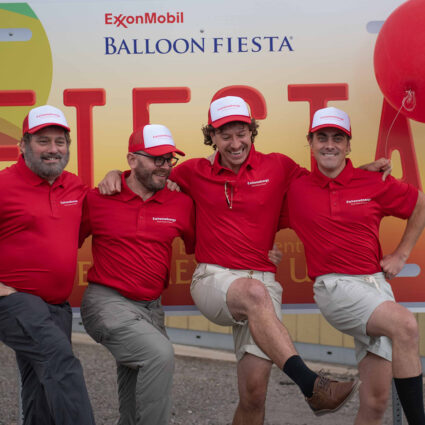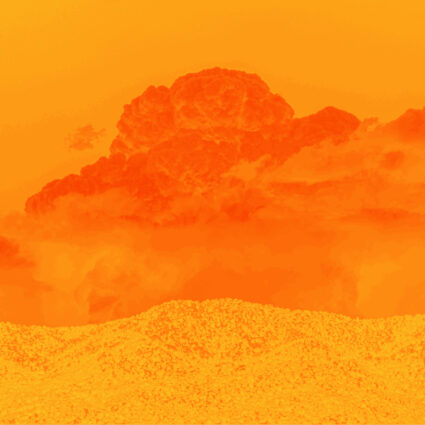Aleina Grace Edwards considers the ways science, religion, and climate change run together in Dinosaur Valley, the Dinosaur Capital of Texas.
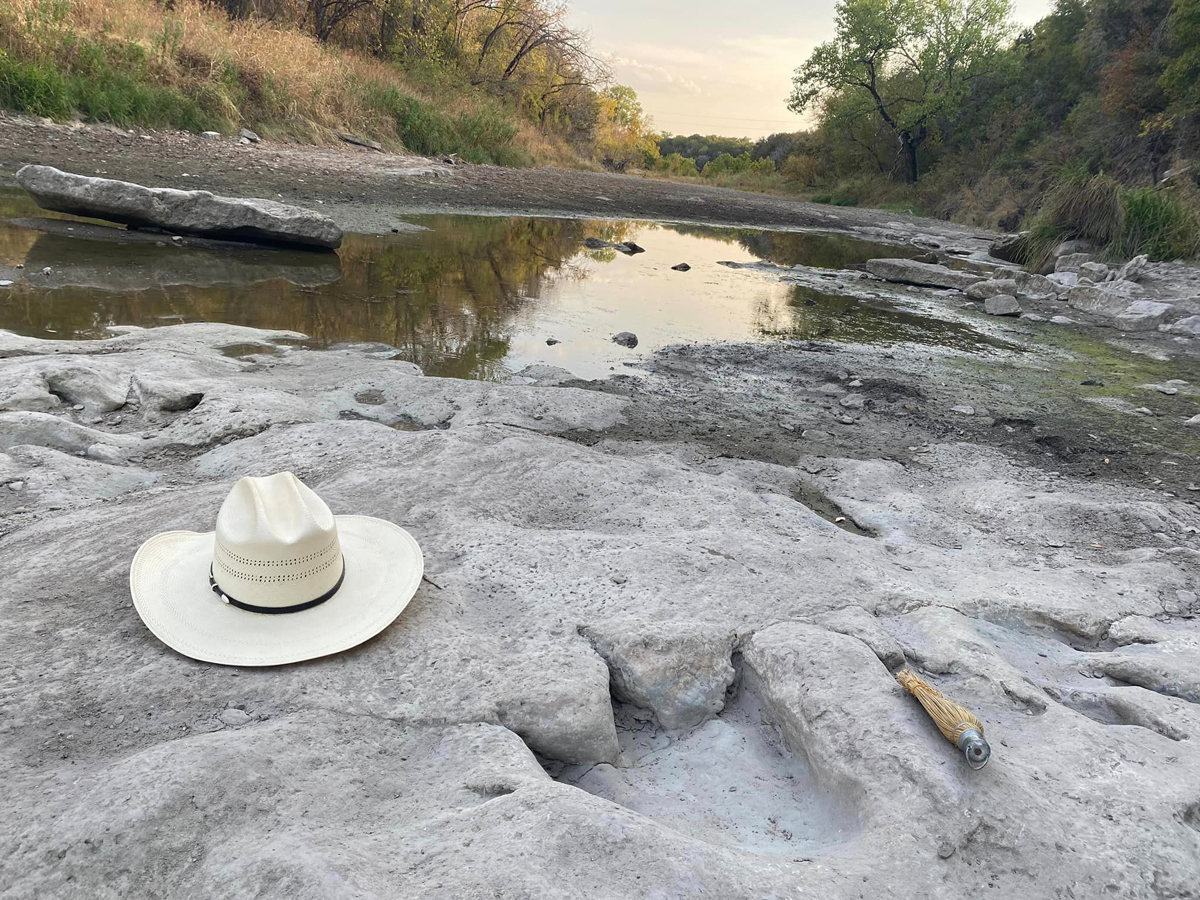
Dinosaur Valley.
You can see the dinosaur tracks when it hasn’t rained in a while, when the river is low and clear.
Glen Rose, about an hour southwest of Dallas, is the Dinosaur Capital of Texas. Thousands of dinosaur tracks are preserved in its Dinosaur Valley State Park, acres of protected land around a stretch of the Paluxy River. The river sediments were deposited 113 million years ago, signs say. This was once the muddy matrix along the edge of an ancient ocean. There are three-toed tracks from smaller cousins of the T-Rex; there are wide, round prints from enormous herbivores.
The Creation Evidence Museum of Texas is just a mile away, a single stone building surrounded by a few beige trailers. The museum teaches Flood geology: the Earth is thousands of years old, not billions; God created dinosaurs, animals, and humans at the same time. We all survived on Noah’s Ark.
A particularly controversial fossil is on display in the museum: the Alvis Delk Cretaceous Footprint.1 It’s an enormous, perfectly formed human footprint intersected by a reptilian one, those three toes unmistakable. If this twin track were real, it would undermine evolution. The museum says the specimen came from the Paluxy and has been sent through a CT scan 800 times. There’s no possibility that the fossil was carved or altered, they say.
My grandmother was born and raised in Glen Rose. Growing up, my mother and her siblings spent summers playing in the river—it was shallow and safe, perfect for little kids. My grandmother sat in the shade of the pecan trees while her four children splashed, their small feet wedged into the ancient indentations of sharp toes in sand.
At eighty-two, my grandmother texts me updates about the town: a crew is filming a few episodes of Yellowstone in the historic square; her childhood home is now a Prohibition-themed restaurant; the extreme drought is revealing more and more dinosaur tracks.2 The most recently exposed trackway is one of the longest in the world.
She’s a proper Texas lady, but my grandmother doesn’t have us pray for what will come. Instead, she points us to the past, tells us about her family—a pair of her cousins were famous bank robbers. She’s constantly referring to my grandfather as “your daddy,” the distinction between generations slipping away. When my sister and I were kids, she took us to Dinosaur Valley every summer so we could feel the tracks under our feet, too.
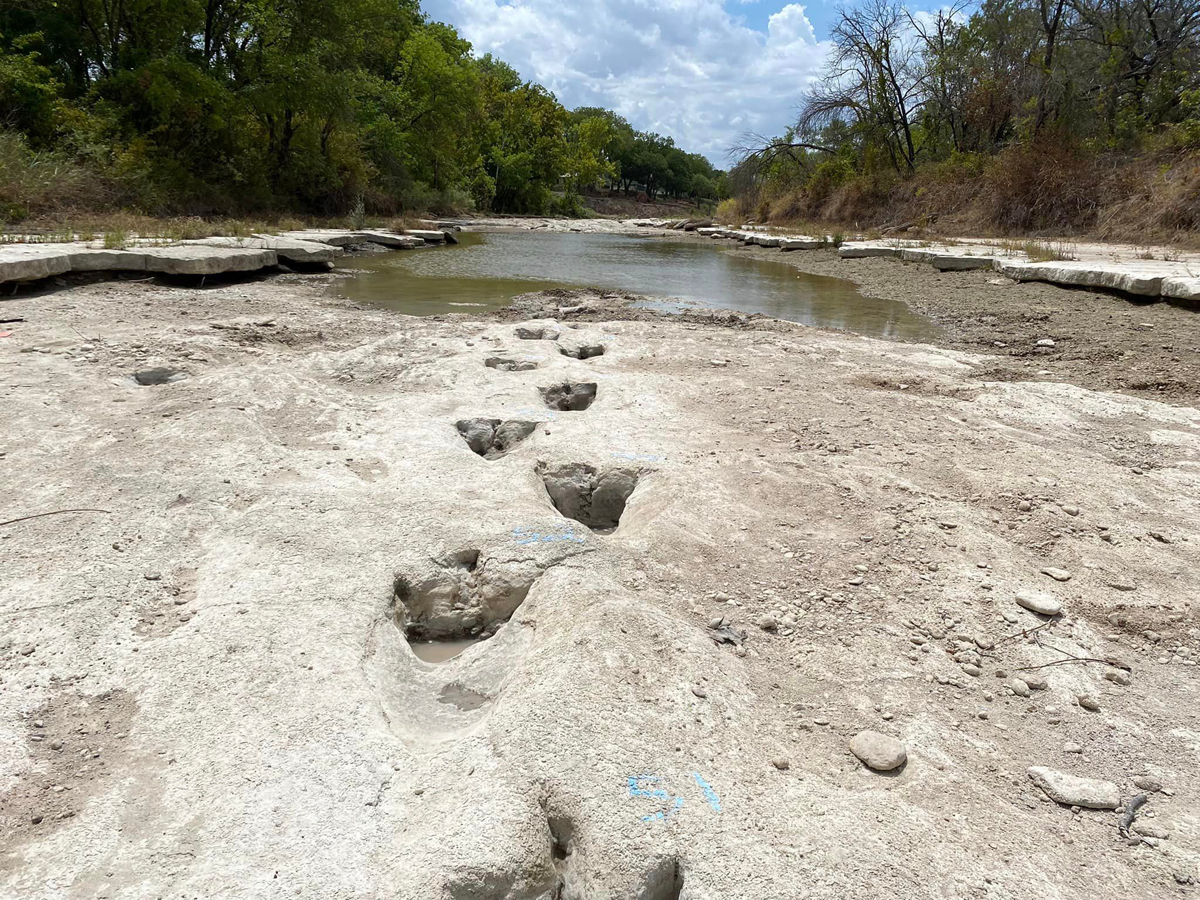
Dinosaur Valley.
In the Creation Evidence Museum, a replica of Noah’s Ark sits on top of ice-blue acrylic waves. Carl Baugh, the museum’s director, spent forty years searching for the original, but never found it.
The museum’s model is only twenty-five feet long, but I try to imagine two of every single animal onboard. Apparently, the mammals and dinosaurs on the Ark were babies, small enough to fit, young enough to have full reproductive potential when they got off.
At eighty-seven, Baugh has spent most of his career trying to recreate the world of the Flood. He still has thick hair slicked back from his face, round cheeks, a cheery smile. He’s still working on the world’s first hyperbaric biosphere, a chamber that simulates the Earth’s pre-Flood atmospheric conditions. So far, it’s only successfully tripled the lifespan of fruit flies.
Extreme drought in Texas means widespread crop and pasture losses, water shortages. This past summer, months without rain made it possible for volunteers to shovel dried sediment out of the Paluxy riverbed and uncover hundreds of new dinosaur tracks. Scientists were as giddy about the discoveries as they were worried about their implications, rushing to make casts before the weather changed.
Most scientists agree a single, catastrophic flood didn’t kill all the dinosaurs. There’s a crater off the coast of Mexico the same age as the dinosaur extinction event; there is evidence of ongoing volcanic eruptions, gasses slowly choking the sky. The continents were splitting over thousands of years, the oceans widening, species disappearing along with their habitats.
Texas is one of only six states that hasn’t adopted the national science standards of teaching students in public schools about the reality of climate change.3 But beginning next fall, eighth graders will receive a mandated lesson: humans directly affect the environment, for better or worse. It’s already happening.
We all want to go back in time. Baugh wants to know how we survived the Flood; the geologists in Dinosaur Valley want more water. The sediment and water that usually cover the tracks keep them safe—exposure is a threat.
In my memory, the Paluxy is dotted with people of all ages wading in the warm shallows. They look up at the clouds, heavy with humidity, or down into the water, searching for the tracks. Limestone slicked with algae slips under hands like wet clay, ready to be shaped.
1. The Creation Evidence Museum’s website describes it as “dense Glen Rose limestone [that] consists of Dinosaur footprint (Acrocanthosaurus) and an eleven-inch human footprint intruded by the dinosaur print.” Critics have pointed out that the museum’s director Carl Baugh has never published anything about the tracks in peer-reviewed journals or provided photographs of the tracks in situ during excavation.
2. Mary Claire Patton, “Drought exposes 113-million-year-old dinosaur tracks at Texas state park,” KSAT.com, August 30, 2023.
3. Erin Douglas, “Texas eighth graders will soon be required to learn about climate change. But not without a showdown over textbooks,” Texas Tribune, August 29, 2023.
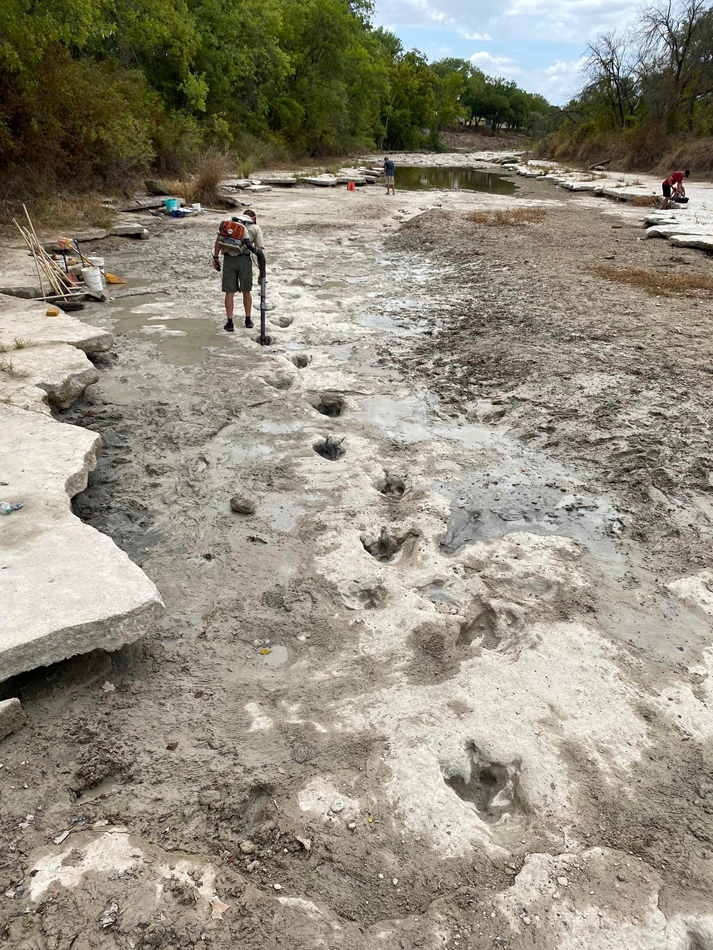
Dinosaur Valley.
